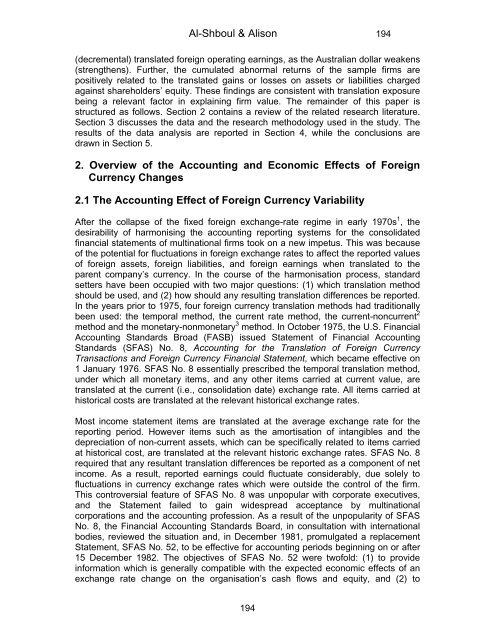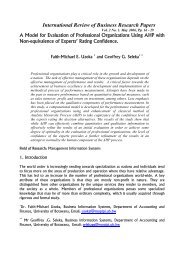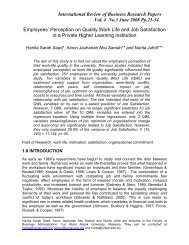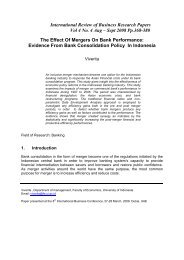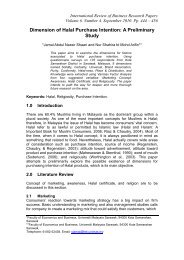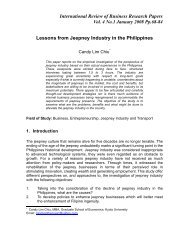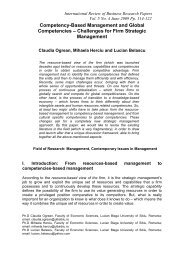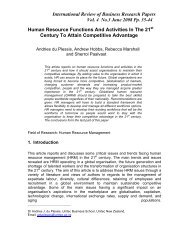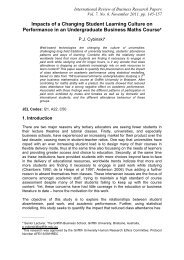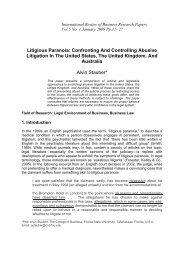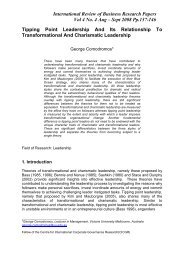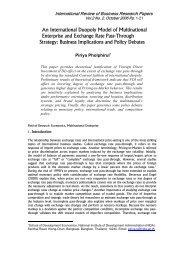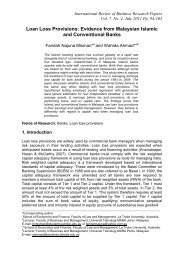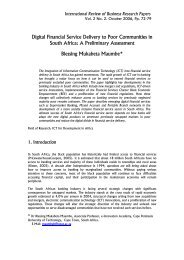Translation Exposure and Firm Value, Evidence From Australian ...
Translation Exposure and Firm Value, Evidence From Australian ...
Translation Exposure and Firm Value, Evidence From Australian ...
You also want an ePaper? Increase the reach of your titles
YUMPU automatically turns print PDFs into web optimized ePapers that Google loves.
Al-Shboul & Alison 194(decremental) translated foreign operating earnings, as the <strong>Australian</strong> dollar weakens(strengthens). Further, the cumulated abnormal returns of the sample firms arepositively related to the translated gains or losses on assets or liabilities chargedagainst shareholders’ equity. These findings are consistent with translation exposurebeing a relevant factor in explaining firm value. The remainder of this paper isstructured as follows. Section 2 contains a review of the related research literature.Section 3 discusses the data <strong>and</strong> the research methodology used in the study. Theresults of the data analysis are reported in Section 4, while the conclusions aredrawn in Section 5.2. Overview of the Accounting <strong>and</strong> Economic Effects of ForeignCurrency Changes2.1 The Accounting Effect of Foreign Currency VariabilityAfter the collapse of the fixed foreign exchange-rate regime in early 1970s 1 , thedesirability of harmonising the accounting reporting systems for the consolidatedfinancial statements of multinational firms took on a new impetus. This was becauseof the potential for fluctuations in foreign exchange rates to affect the reported valuesof foreign assets, foreign liabilities, <strong>and</strong> foreign earnings when translated to theparent company’s currency. In the course of the harmonisation process, st<strong>and</strong>ardsetters have been occupied with two major questions: (1) which translation methodshould be used, <strong>and</strong> (2) how should any resulting translation differences be reported.In the years prior to 1975, four foreign currency translation methods had traditionallybeen used: the temporal method, the current rate method, the current-noncurrent 2method <strong>and</strong> the monetary-nonmonetary 3 method. In October 1975, the U.S. FinancialAccounting St<strong>and</strong>ards Broad (FASB) issued Statement of Financial AccountingSt<strong>and</strong>ards (SFAS) No. 8, Accounting for the <strong>Translation</strong> of Foreign CurrencyTransactions <strong>and</strong> Foreign Currency Financial Statement, which became effective on1 January 1976. SFAS No. 8 essentially prescribed the temporal translation method,under which all monetary items, <strong>and</strong> any other items carried at current value, aretranslated at the current (i.e., consolidation date) exchange rate. All items carried athistorical costs are translated at the relevant historical exchange rates.Most income statement items are translated at the average exchange rate for thereporting period. However items such as the amortisation of intangibles <strong>and</strong> thedepreciation of non-current assets, which can be specifically related to items carriedat historical cost, are translated at the relevant historic exchange rates. SFAS No. 8required that any resultant translation differences be reported as a component of netincome. As a result, reported earnings could fluctuate considerably, due solely tofluctuations in currency exchange rates which were outside the control of the firm.This controversial feature of SFAS No. 8 was unpopular with corporate executives,<strong>and</strong> the Statement failed to gain widespread acceptance by multinationalcorporations <strong>and</strong> the accounting profession. As a result of the unpopularity of SFASNo. 8, the Financial Accounting St<strong>and</strong>ards Board, in consultation with internationalbodies, reviewed the situation <strong>and</strong>, in December 1981, promulgated a replacementStatement, SFAS No. 52, to be effective for accounting periods beginning on or after15 December 1982. The objectives of SFAS No. 52 were twofold: (1) to provideinformation which is generally compatible with the expected economic effects of anexchange rate change on the organisation’s cash flows <strong>and</strong> equity, <strong>and</strong> (2) to194


